|
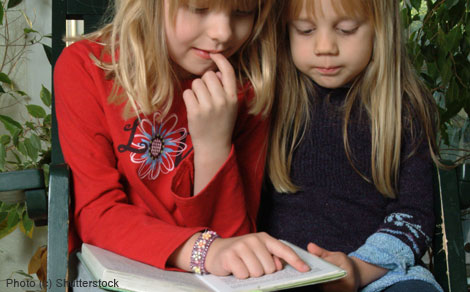
Acquiring Reading
By M.H. Furgason
Children can learn to read as naturally as they learn how to walk and to talk.
I don’t know how my three older children learned to read. I didn’t teach them in any traditional sense nor did I bother to look closely enough at the process to see exactly what was happening as they were learning. As someone who trusts in a children’s ability to learn, I just know that at three different ages they began to read.
Now my fourth and youngest child is learning to read and, curious about the process this time, I decided to watch her as she learns. As I do, I can see that she is also progressing without anyone “teaching” her. When I began noticing how she was learning to read, I didn’t have a grasp of or a word for the whole process. I toyed with different terms and phrases such as “discovering reading” but none of these seemed to capture the essence of what was happening.
I finally found the word I was looking for quite by accident. I was looking for quotes that demonstrated how children acquire their spoken language and found a study that described the interaction involved with acquiring language. The process was exactly like the process I was observing in my daughter as she began to read. She was “acquiring” reading. And why not? Learning to read is simply mastering written language.
We don’t need to “teach” our babies to talk. Human beings, barring any great disability, are “hard wired” for language. Grammar isn’t taught by understanding rules and memorizing exceptions. Verbs do not have to be conjugated in any tense. If we were to try to teach our children to speak their primary language in this way, language acquisition would undoubtedly be stunted. Language, including rules of grammar and the meaning of words, is assimilated as children interact with other people who are using spoken language.
Watching my children has led me to believe that reading, just like speaking, is an innate ability of human beings. Reading begins when a level of mental and physical development is reached that allows the assimilation of written language, as long children are exposed to a literate environment. Instruction in reading may at times hinder this natural process, making reading seem difficult. Children learn to read despite, rather than because of, instruction.
Although children cannot learn to read if they are isolated from reading, they do learn to read from interaction with others. Educators already know that reading to a child will help guarantee reading success. They attribute this to the example that the parent is setting. But this reading time, even before the child starts “learning” to read, lays the foundation for the interaction necessary for reading acquisition.
So how does a child acquire reading through interaction? There are many ways and one of the many problems with “teaching” reading is that some of these ways get pushed to the side or are discouraged. Allowing children access to adults who will read to them, answer their questions and support them in their endeavors will cover all the bases of reading acquisition.
These are some of the processes that I have noticed as I’ve observed my daughter:
Asking what a word says. This is not unlike the “look-see” method that has fallen out of favor, though it is less formal. It does, however, have its merits. Every parent has been asked by their child what a word says. If, by listening to whole sentences, children can grasp the rules of grammar, then there are also ways to start to grasp the rules of reading by being told what a word says. I have never made my children sound out words when they asked what a word was. I’ve just told them. Many times, they have repeated a word slowly after being told, following the letters as they say the word. This actually seems a very pleasurable activity for them and goes against the conventional beliefs that the word is read and then the child sounds it out on their own.
Asking what sound a letter makes. This is informal phonics and also has a place in reading acquisition. No one can deny that the letters correspond with sounds and that those sounds are the clues to the meaning of what is written. It is when we only concentrate on letters that we don’t allow children to learn the exceptions naturally. Children seem more interested in words than letters when they begin exploring written language. This is just the opposite of how reading through phonics is taught but it makes more sense. Words have meaning; letters do not. As children search out meaning they are going to look for the method that brings that meaning into focus.
Reading what is already known. Children often read through a book that they’ve memorized because someone else has read it to them over and over. I watched as my children read through their scripts for the many plays they were in and, even though the words were memorized, they read slowly, sounding out the words and absorbing the rules of reading. Sometimes they would ask for help with a word that they weren’t sure of, even though the entire passage was already memorized.
Real-life reading. Much of the way we use writing in real life is not in book form – shopping lists, quick notes to tell someone we love them, signs, the entertaining comics in the newspaper or phone messages. All of these examples have meaning, though, and are not just lists of words. Our society is a literate one and a child who is allowed a full-time place in the real world will be surrounded by positive and useful reading experiences. Unfortunately, the school classroom can be one of the most literarily sterile environments there is.
Writing. Children have a strong urge to communicate. They love to write their names and their friends’ names, as well other words that have meaning to them. By giving them plenty of writing tools, we help them explore written language all on their own. Through this process, the whole reason behind written language eventually becomes obvious.
Treating reading mistakes positively. It is helpful for reading acquisition if adults accept the mistakes that young children make in speech. For example when a child says, “There’s a tree-knocker outside,” we will either let is pass (“Oh, yes there is!”) because the important part of this communication is the excitement of a bird and the name doesn’t matter, or we will use the word properly (“Oh, yes! A woodpecker.”) to set a good example without correcting the child’s speech. Likewise, when my children read to me, the mistakes weren’t as important as the words that they read correctly. Frequently, as they progressed through the sentence or story, their mistakes became apparent to them and they corrected them themselves.
I have noticed that when children are allowed to learn to read, the age at which it happens varies widely. I was reading at the age of four, even though I had not received any formal instruction. My children have all become readers at ages varying from six to 11 years old. Just as babies begin to walk and talk at different ages, children will learn to read at different times. To declare that children must read by the age of six or eight, will only frustrate children and teachers, as well as create more problems which add to the myth that learning to read is a difficult process.
M.H. Furgason is a life-long unschooler despite 13 years of government education. She is the founder of Houston Unschoolers Group. She lives in Houston, Texas with her four children and husband.
Copyright © Life Media
Privacy Policy
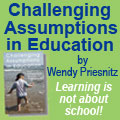 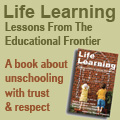 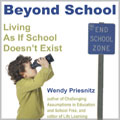
 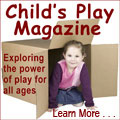 
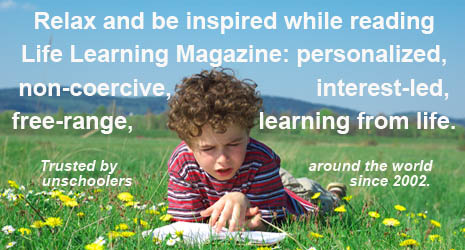
|

